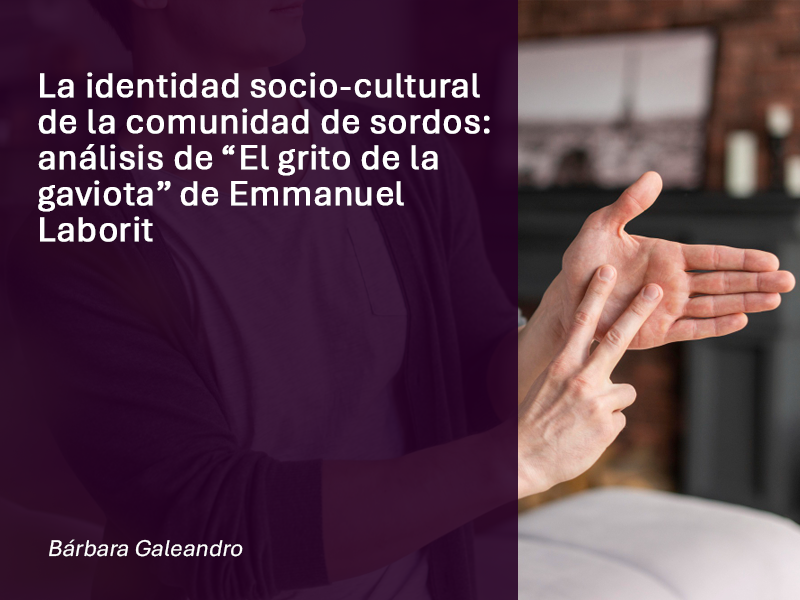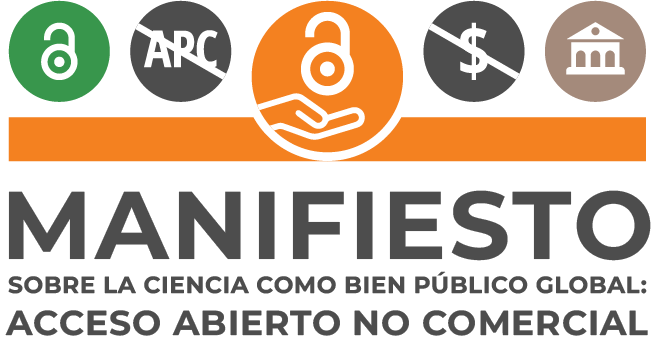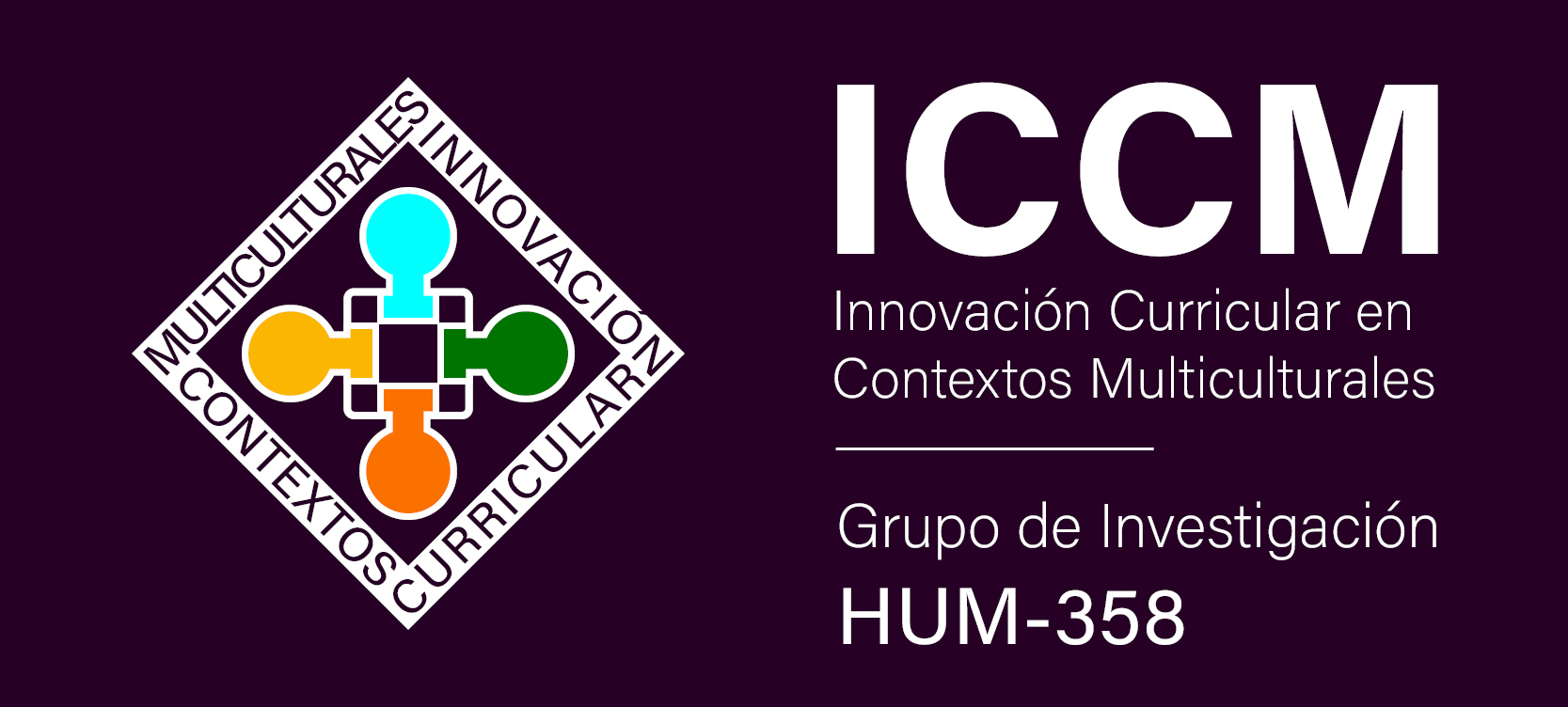THE SOCIO-CULTURAL IDENTITY OF THE DEAF COMMUNITY: THE ANALYSIS OF “THE CRY OF THE SEAGULL”, BY EMMANUELLE LABORIT
DOI:
https://doi.org/10.30827/modulema.v9i.31791Keywords:
identity, deafness, signlanguage, inclusionAbstract
This article presents a reflective analysis of the socio-cultural identity of the Deaf Community. The categories of analysis present in this work meet the objectives we establish in it: to highlight the identity peculiarity of the Deaf Community, which is manifested in the use of the sign language; to insist on the need to see sign language as just one more language that characterises a group of people and defines their identity; and to reflect on the necessity to raise collective awareness to promote equality and the inclusion of the Deaf Community. In order to achieve our objectives and better understand how the cultural identity of the deaf is defined, the methodology used is based on a qualitative approach. For this purpose, we took as a reference the analysis of the autobiographical story The cry of the seagull, by Emmanuelle Laborit. This writer, deaf since birth, relates the difficult process through which she eventually managed to achieve her identity as a deaf person. Therefore, we have come to the conclusion that, thanks to the experience of this author, we have been able to reflect on the importance of sign language in defining the identity of a deaf person, and on the concept of deaf
identity. Another conclusion of this autobiographical analysis refers to the necessity to consider sign language as another language and to value it as an instrument that deaf people use to construct their identity.
Downloads
References
Jarque Moyano, M.J. (2012). Las lenguas de signos: su estudio científico y reconocimiento legal. Anuari de Filologia. Estudis de Lingüística, (2), 33-48. DOI: https://doi.org/10.1344/AFEL2012.2.3
Laborit, L. (2020). El grito de la gaviota (5.ª ed.). Seix Barral.
Ladd, P. (2003). Understanding Deaf Culture in Search of Deafhood. Multilingual Matters Ltd. DOI: https://doi.org/10.21832/9781853595479
López-González, M. y Llorent, V. J. (2013). ¿Deficiencia, discapacidad o identidad cultural? Interpretación de la sordera y respuestas en el sistema educativo en España. Rev. CEFAC, 15(6), 1664-1671. https://doi.org/10.1590/S1516-18462013000600030 DOI: https://doi.org/10.1590/S1516-18462013000600030
Malerba, D. (2020). Sordità. Percezione e realtà nell’approccio pedagógico. Sapienza Università editrice.
Mancini, T. (2006). Psicologia dell’identità etnica. Carrocci.
Oviedo, A. (2006). Understanding Deaf Culture. [Reseña del libro Inside Deaf Culture, por C. Padden & T. Humphries]. Cultura Sorda. https://cultura-sorda.org/resenaladd-2003/.
Padden, C. (1980). The Deaf Community and the culture of deaf people. En C. Baker y R. Battison (Ed.), Sign Language and the Deaf Communities. National Association of the Deaf.
Peretti A. (2023). L’esperienza della LIS. Osservazioni e curiosità di un udente. En A. Zuccalà (Ed.), Cultura del gesto e della parola, (pp. 35-41). Meltemi.
Ríos Hernández, I. (2010). El lenguaje: herramienta de reconstrucción del pensamiento. Razón y palabra, (72). https://repositori.upf.edu/bitstream/handle/10230/16347/Rios_raypa_10.pdf?sequence=1
Rodríguez, L., Arce C. y Sabucedo, J.M. (1997). Dimensiones de identidad social en jóvenes sordos, Anuario de Psicología, (72), 91-104.
Rodríguez Martín. D. (2013). El silencio como metáfora. Una aproximación a la Comunidad Sorda y a su sentimiento identitario, Perifèria - Revista de recerca i formación en antropología, (18), 1-27. DOI: https://doi.org/10.5565/rev/periferia.378
Rosenfeld, A. (2023). Las medusas no tienen orejas. Seix Barral.
Stokoe, W. C. (1960). Sign Language Structure: An outline of the visual communication systems of the American deaf. University of Buffalo.
Zuccalà A. (2023). La cultura dei sordi e il dibattito contemporaneo in antropología. En A. Zuccalà (Ed.), Cultura del gesto e cultura della parola, (pp. 56-67). Meltemi.

Downloads
Published
How to Cite
Issue
Section
License
Copyright (c) 2025 Barbara Galeandro

This work is licensed under a Creative Commons Attribution-NonCommercial-ShareAlike 4.0 International License.

















